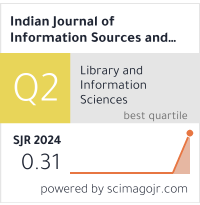Advancing Crack Detection Using Deep Learning Solutions for Automated Inspection of Metallic Surfaces
DOI:
https://doi.org/10.51983/ijiss-2024.14.1.4003Keywords:
Convolutional Neural Network, Crack Detection, Automated Receiving Inspection, Image Processing Techniques, Vision-Based Method, Deep Learning, VGG16 CNN, ResNet, MobileNet, AlexNet, LeNet-5Abstract
The deep Convolutional Neural Network (CNN) architecture used in this research study provides a proof of concept for crack detection on the metallic surface of a hex nut. The goal is to create an automated receiving inspection process to supplement human inspections conducted on-site. Conventional image processing techniques (IPTs) have been extensively used for mechanical infrastructure fault detection. These techniques focus on image modification to extract typical features, such as surface fractures in materials like steel and concrete. However, obstacles presented by a variety of real-world variables, such as changes in lighting and shadows, make it difficult to use IPTs. Our suggested vision-based method employs a deep learning CNN to overcome these difficulties, eliminating the need to explicitly compare fault features. CNNs are more resilient to shifting real-world situations than IPTs since they are naturally trained to identify characteristics in images. Following training on a dataset of 1081 images with dimensions of 256 x 256 pixels, the VGG16 CNN architecture achieved an impressive accuracy of around 94.17%. Additional CNN architectures, including ResNet, MobileNet, AlexNet, and LeNet-5, are employed to assess and compare fault detection accuracies in order to select the most appropriate architecture for the model. To evaluate the robustness and flexibility of the suggested method in various situations, we conducted tests with 206 images from an alternative structure that was not part of the training dataset. These images depicted a range of circumstances, such as intense light patches and tiny fissures. The outcomes showed that our proposed method outperforms current approaches, highlighting its usefulness in practical situations involving the identification of metallic defects.
References
Ajmi, C., Zapata, J., Elferchichi, S., Zaafouri, A., & Laabidi, K. (2020). Deep Learning Technology for Weld Defects Classification Based onTransfer Learning and Activation Features. Advances in MaterialsScience and Engineering, 2020, 1–16. https://doi.org/10.1155/2020/1574350.
Ali, R., Chuah, J. H., Talip, M. S. A., Mokhtar, N., & Shoaib, M. A.(2022). Structural crack detection using deep convolutional neuralnetworks. Automation in Construction, 133, 103989. https://doi.org/10.1016/j.autcon.2021.103989.
Bengio, Y., Courville, A., & Vincent, P. (2013). Representationlearning: A review and new perspectives. IEEE Transactions onPattern Analysis and Machine Intelligence, 35(8), 1798-1828.
Cha, Y., Choi, W., & Büyüköztürk, O. (2017). Deep Learning-Based Crack Damage Detection Using Convolutional Neural Networks.Computer-Aided Civil and Infrastructure Engineering, 32(5), 361-378. https://doi.org/10.1111/mice.12263.
Cumbajin, E., Rodrigues, N., Costa, P., Miragaia, R., Frazão, L., Costa, N., Fernández-Caballero, A., Carneiro, J., Buruberri, L. H., & Pereira, A. (2023). A Systematic Review on Deep Learning with CNN Applied to Surface Defect Detection. Journal of Imaging, 9(10), 193. https://doi.org/10.3390/jimaging9100193.
Hamishe Bahar, Y., Guan, H., So, S., & Jo, J. (2022). AComprehensive Review of Deep Learning-Based Crack DetectionApproaches. Applied Sciences, 12(3), 1374. https://doi.org/10.3390/app12031374.
Ibrahim, A. A. M., & Tapamo, J. R. (2024). Transfer learning-based approach using new convolutional neural network classifier for steelsurface defects classification. Scientific African, 23, e02066. https://doi.org/10.1016/j.sciaf.2024.e02066.
Islam, M. M., Hossain, M. B., Akhtar, M. N., Moni, M. A., & Hasan,K. F. (2022). CNN Based on Transfer Learning Models Using DataAugmentation and Transformation for Detection of Concrete Crack.Algorithms, 15(8), 287. https://doi.org/10.3390/a15080287.
Jha, S. B., & Babiceanu, R. F. (2023). Deep CNN-based visual defect detection: Survey of current literature. Computers in Industry, 148, 103911. https://doi.org/10.1016/j.compind.2023.103911.
Jiang, Q., Tan, D., Li, Y., Ji, S., Cai, C., & Zheng, Q. (2019). ObjectDetection and Classification of Metal Polishing Shaft Surface DefectsBased on Convolutional Neural Network Deep Learning. Applied Sciences, 10(1), 87. https://doi.org/10.3390/app10010087.
Johnston, A. (2019). Enhancing Structural Integrity: A Comprehensive Guide to Structural Health Monitoring. Wiley.
Konovalenko, I., Maruschak, P., Brevus, V., & Prentkovskis, O.(2021). Recognition of Scratches and Abrasions on Metal SurfacesUsing a Classifier Based on a Convolutional Neural Network. Metals, 11(4), 549. https://doi.org/10.3390/met11040549.
LeCun, Y., Bengio, Y., & Hinton, G. (2015). Deep learning. Nature, 521(7553), 436-444.
Li, S., & Zhao, X. (2017). A method of Crack Detection Based on a Convolutional Neural Network. Retrieved from https://www.researchgate.net/profile/Shengyuan-Li/publication/322840468_A_Method_of_Crack_Detection_Based_on_Convolutional_ Neural_Networks/links/5c6a216b299bf1e3a5af0ad0/A-Method-of-Crack-Detection-Based-on-Convolutional-Neural-Networks.pdf.
Muhammad, U., Wang, W., & Pervez, S. (2018). Pre-trained VGGNet Architecture for Remote-Sensing Image Scene Classification. 2018 24th International Conference on Pattern Recognition (ICPR).
Munawar, H. S., Hammad, A. W. A., Haddad, A., Soares, C. A. P., & Waller, S. T. (2021). Image-Based Crack Detection Methods: AReview. Infrastructures, 6(8), 115. https://doi.org/10.3390/infrastructures6080115.
Piwal, H., Dhokale, M., Biswas, R., Raut, S., & Malge, A. (2023). Surface defect detection using deep learning. International Conference on Smart Materials And Structures, ICSMS-2022. https://doi.org/10.1063/5.0129207.
Qayyum, W., Ehtisham, R., Bahrami, A., Camp, C., Mir, J., & Ahmad, A.(2023). Assessment of Convolutional Neural Network Pre-Trained Models for Detection and Orientation of Cracks. Materials, 16(2), 826. https://doi.org/10.3390/ma16020826.
Qi, S., Yang, J., & Zhong, Z. (2020). A Review on Industrial SurfaceDefect Detection Based on Deep Learning Technology. 2020 the 3rd International Conference on Machine Learning and Machine Intelligence. https://doi.org/10.1145/3426826.3426832.
Sauter, D., Schmitz, A., Dikici, F., Baumgartl, H., & Buettner, R.(2021). Defect Detection of Metal Nuts Applying Convolutional Neural Networks. In 2021 IEEE 45th Annual Computers, Software, and Applications Conference (COMPSAC) (pp. 248-257). Madrid, Spain. https://doi.org/10.1109/COMPSAC51774.2021.00043.
Simonyan, K., & Zisserman, A. (2014). Very deep convolutional networks for large-scale image recognition. arXiv, 1409(1556v6).
Smith, J., Johnson, R., & Patel, K. (2020). Advances in Deep Learning for Image-Based Defect Detection: A Review. IEEE Transactions onIndustrial Informatics, 16(1), 322-334.
Soukup, D., & Huber-Mörk, R. (2014). Convolutional NeuralNetworks for Steel Surface Defect Detection from Imagemetric Stereo Images. Lecture Notes in Computer Science. https://doi.org/10.1007/978-3-319-14249-4_64.
Venkatesh, R., Vignesh Saravanan, K., Aswin, V. R., Balaji, S.,Amudhan, K., & Rajakarunakaran, S. (2022). Detection of Cracks inSurfaces and Materials Using Convolutional Neural Networks. Mobile Radio Communications and 5G Networks, 223-241. https://doi.org/10.1007/978-981-16-7018-3_18.
Wu, F. (2022). Effect of transfer learning on the performance ofVGGNet-16 and ResNet-50.
Yi, L., Li, G., & Jiang, M. (2016). An End-to-End Steel Strip SurfaceDefects Recognition System Based on Convolutional NeuralNetworks. Steel Research International, 88(2). https://doi.org/10.1002/srin.201600068.
Downloads
Published
How to Cite
Issue
Section
License
Copyright (c) 2024 The Research Publication

This work is licensed under a Creative Commons Attribution-NonCommercial-NoDerivatives 4.0 International License.









